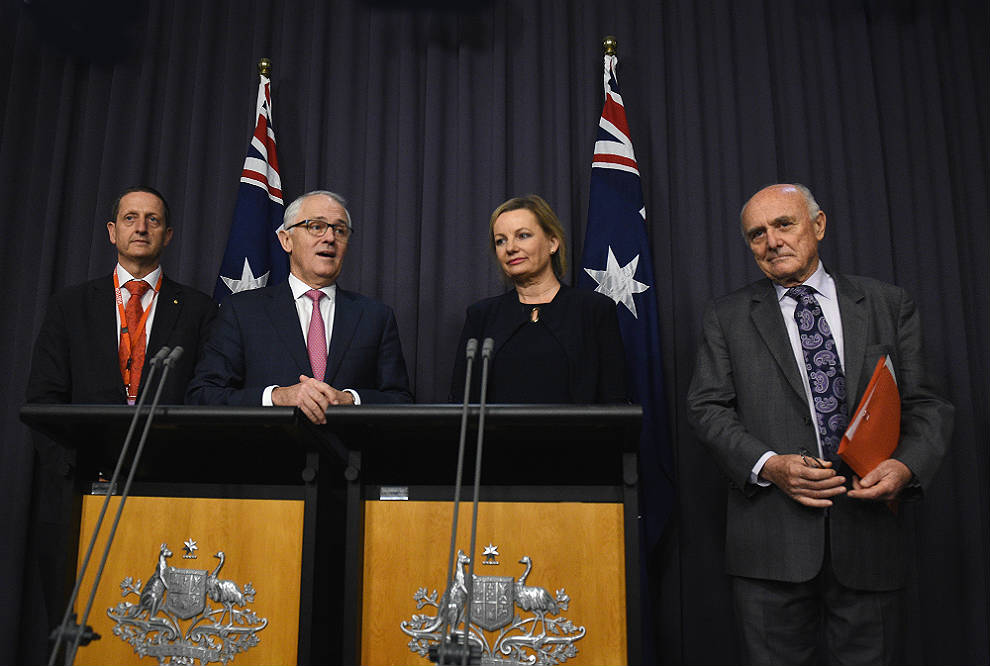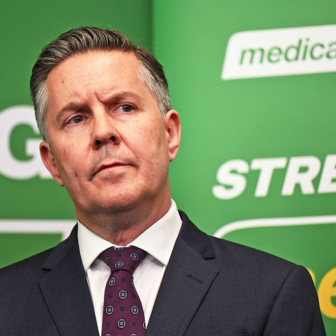For the last few months, health minister Sussan Ley has avoided confrontation with health sector interests by adopting the empty box approach to policy – “I'll look into it” – and reviewing almost all aspects of the portfolio. Reviews are covering primary care, the Medicare schedule, mental health, and private health insurance. A whole-of-government review of federalism is looking at public hospitals and chronic disease management, and the human services consequences of the Harper competition review are still being juggled.
Last week one of the balls was taken out of the air when the government responded to the review of mental healthcare by signalling an appetite for a significant change in direction – from a centralised Canberra-knows-best approach to one that acknowledges regional differences.
Several elements in the response are noteworthy. First, it marks an end of the cargo cult that has characterised this field. Federal mental health policy has often involved seemingly random drops of money – some very large, some small – from a great height; sometimes they have hit a target, sometimes they’ve been well wide of the mark.
Second, the federal government’s approach to mental health policy also involved siloed national programs, each one distinct and separate, imposed across the country with no thought to their impact on existing local services and networks. Under the approach announced last week, these programs will be absorbed into a grant to the newly established Primary Health Networks, the Coalition’s replacement for Labor’s Medicare Locals. These networks will develop their own approaches within a nationally developed framework, but will have flexibility to tailor programs to local or regional needs.
What are the lessons for the other health reviews still being juggled?
The end of the mental health cargo cult sends a clear signal: health sector stakeholders shouldn’t assume that the federal government will be cajoled into spending vast sums to buy their agreement or support. This is a good move. Opportunities exist in the health system to reset priorities and eliminate waste, and they should be the first step in policy development rather than an afterthought. It may be that additional funds are necessary – and the states have a legitimate argument that cuts to public hospital grants have been too deep – but any new policy should emphasise getting value for the money.
Building on the nascent Primary Health Networks is also a positive move. Too often the Commonwealth’s programmatic confetti has caused problems with local coordination. A Canberra-designed one-size-fits-all solution has been expected to apply in areas as disparate as remote Cape York and Melbourne’s coffee-fuelled Carlton. The mental health response may presage a further collapsing of Commonwealth programs as part of the primary care review, again using the expanding capacity of Primary Health Networks to lead locally tailored service development.
The mental health response also reveals paths not taken. It aims to encourage a “person-centred” approach, with services responding more flexibly to consumer needs. Implicitly, it has rejected the alternative of giving health consumers funds to buy the services they want – as happens in the National Disability Insurance Scheme and “consumer directed care” in the aged care sector. It seems unlikely that the primary care review will recommend direct payments to consumers as a way of funding services for people with chronic illnesses.
Strengthening competition, as recommended by the Harper review, is not an overt component of the mental health reforms but it is implicit in the government’s approach. Harper’s pro-competition objectives will be realised over time as the thirty-one separate Primary Health Networks make decisions about which mental health services they commission. While dramatic competition reform is unlikely in this sector, more market-like solutions will develop regardless. Again, a similar outcome is probably likely from the primary care review.
Also missing from the mental health response is any role for private health insurance, despite the insurers’ lobbying in recent years. They will not be reassured by the implications of last week’s announcement: it seems unlikely that local service coordination and priority setting would be presented as the answer in mental health, but insurer priority setting and coordination presented as the answer for physical health.
The states and territories play a major role in mental health provision. Unfortunately, they barely get a mention in Sussan Ley’s mental health response, other than being expected to follow the Commonwealth’s Pied Piper march into a new National Mental Health Plan. This is a major weakness of the federal government’s response. Ideally, states would incorporate Primary Health Networks into their thinking about future local services, but they will find this harder to do if they are seen as branch offices of the Commonwealth Department of Health rather than as local, agile, responsive and independent agencies. Canberra needs to change its mindset: rather than micromanaging inputs and processes, it should hold the responsible services to account for their performance outcomes. Joint federal-state use of Primary Health Networks could lead to better outcomes for communities, and for governments.
The mental health response signals a dramatic shift in the federal government’s approach to this important aspect of healthcare. Rather than trying to solve every problem by either adding a new item to the Medicare schedule or creating a tightly defined funding silo, the government is showing its willingness to allow regional purchasers – the Primary Health Networks – to shape services in their areas. This shift is a change for the better, and it augurs well for future changes in this sector. •




